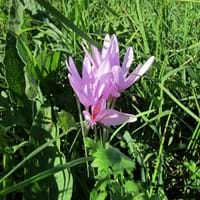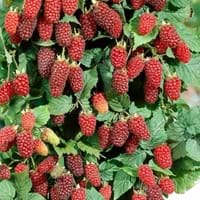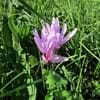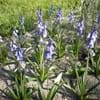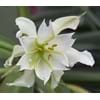Life Span
Perennial
Perennial
Type
Bulb or Corm or Tuber
Fruit
Origin
Europe, Turkey, Central Asia, Western Asia
Hybrid origin
Types
Colchicum cupanii, Colchicum alpinum
loganberry is a hybrid
Number of Varieties
Not Available
Habitat
Fields, meadows, Rocky areas, Shaded sites, Woodlands
gardens
USDA Hardiness Zone
Not Available
7-9
AHS Heat Zone
Not Available
9-1
Sunset Zone
21,22
2a, 2b, 3a, 3b, 4, 5, 6, 7, 8, 9, 10, 11, 12, 13, 14, 15, 16, 17, 18, 19, 20, 21, 22, 23, 24
Habit
Clump-Forming
Prostrate/Trailing
Flower Color
White, Yellow, Purple, Violet
White
Flower Color Modifier
Bicolor
Bicolor
Fruit Color
Not Available
Red
Leaf Color in Spring
Green
Green
Leaf Color in Summer
Light Green
Green
Leaf Color in Fall
Several shades of Green
Green
Leaf Color in Winter
Light Green
Light Green
Leaf Shape
Long Linear
Heart-shaped
Plant Season
Spring, Fall, Winter
Spring, Summer
Sunlight
Full Sun, Partial Sun
Full Sun, Partial Sun
Growth Rate
Medium
Very Fast
Type of Soil
Loam
Loam, Sand
The pH of Soil
Acidic, Neutral
Acidic, Neutral
Soil Drainage
Well drained
Well drained
Bloom Time
Early Spring, Late Summer, Early Fall, Fall, Late Fall, Winter, Late Winter
Early Spring
Tolerances
Drought
Drought
Where to Plant?
Container, Ground, Pot
Container, Ground
How to Plant?
Divison, Seedlings
Seedlings
Plant Maintenance
Low
Medium
Watering Requirements
Do Not over Water, Medium, Needs less watering, Never Over-water, Requires regular watering, Water less during winter
Needs watering once a week
In Summer
Ample Water
Ample Water
In Spring
Less Watering
Twice a week
In Winter
Less Watering
Once a week
Soil pH
Acidic, Neutral
Acidic, Neutral
Soil Type
Loam
Loam, Sand
Soil Drainage Capacity
Well drained
Well drained
Sun Exposure
Full Sun, Partial Sun
Full Sun, Partial Sun
Pruning
Remove damaged leaves, Remove dead leaves, Remove dead or diseased plant parts, Remove shoots
No pruning needed in the early stages, Prune every year
Fertilizers
fertilize in growing season, Less fertilizing
Compost, fertilize in spring, Mulch, organic fertlizers
Pests and Diseases
Not Available
Aphids, Cane Spot, Gray mold, Spur Blight
Plant Tolerance
Drought
Drought
Flowers
Showy
Insignificant
Flower Petal Number
Single, Double
Single
Foliage Texture
Coarse
Medium
Foliage Sheen
Not Available
Matte
Attracts
Bees, Butterflies
Birds, Butterflies
Allergy
Kidney Disease, Low blood pressure, Stomach pain, Toxic, Vomiting
Diarrhea, Itchiness, Swelling, Vomiting
Aesthetic Uses
Landscape Designing
Not Used For Aesthetic Purpose
Beauty Benefits
No Beauty Benefits
Not Available
Environmental Uses
Air purification, No fertilizer, pesticides, or herbicides needed, Prevent Soil Erosion
Nesting sites for birds
Medicinal Uses
anti-cancer, anti-inflammatory, Diarrhea, Diuretic, Rheumatism
antimicrobial, Antioxidants, Folate, Low calories, Low carbohydrates, Low Fats, Manganese, Vitamin C, Vitamin K
Part of Plant Used
Flowers, Leaves
Fruits
Other Uses
Employed in herbal medicine, Showy Purposes, Used as Ornamental plant, Used for its medicinal properties
Used As Food, Used for its medicinal properties
Used As Indoor Plant
Yes
No
Used As Outdoor Plant
Yes
Yes
Garden Design
Alpine, Container, Cutflower, Foundation, Lawns and Turf, Mixed Border, Rock Garden / Wall, Wildflower
Edible, Fruit / Fruit Tree
Botanical Name
COLCHICUM
RUBUS x loganobaccus
Common Name
Colchicum
Loganberry
In Hindi
colchicum
Loganberry
In German
colchicum
Loganbeere
In French
colchique
Loganberry
In Spanish
Colchicum
Loganberry
In Greek
Colchicum
Είδος μούρου
In Portuguese
Colchicum
framboesa silvestre
In Polish
Colchicum
Loganberry
In Latin
Colchicum
Loganberry
Phylum
Magnoliophyta
Magnoliophyta
Class
Liliopsida
Magnoliopsida
Family
Liliaceae
Rosaceae
Clade
Angiosperms, Monocots
Angiosperms, Eudicots, Rosids
Tribe
Not Available
Not Available
Subfamily
Wurmbaeiodeae
Not Available
Properties of Colchicum and Loganberry
Wondering what are the properties of Colchicum and Loganberry? We provide you with everything About Colchicum and Loganberry. Colchicum doesn't have thorns and Loganberry doesn't have thorns. Also Colchicum does not have fragrant flowers. Colchicum has allergic reactions like Kidney Disease, Low blood pressure, Stomach pain, Toxic and Vomiting and Loganberry has allergic reactions like Kidney Disease, Low blood pressure, Stomach pain, Toxic and Vomiting. Compare all the properties and characteristics of these two plants. Find out which of these plant can be used as indoor plant. If you are interested to decorate your house and garden, find out aesthetic uses, compare them and select the plant which will beautify your surrounding. Along with beautification, try comparing medicinal and edible uses of Colchicum and Loganberry and you can choose the plant having best and most benefits.
Season and Care of Colchicum and Loganberry
Season and care of Colchicum and Loganberry is important to know. While considering everything about Colchicum and Loganberry Care, growing season is an essential factor. Colchicum season is Spring, Fall and Winter and Loganberry season is Spring, Fall and Winter. The type of soil for Colchicum is Loam and for Loganberry is Loam, Sand while the PH of soil for Colchicum is Acidic, Neutral and for Loganberry is Acidic, Neutral.
Colchicum and Loganberry Physical Information
Colchicum and Loganberry physical information is very important for comparison. Colchicum height is 7.60 cm and width 7.60 cm whereas Loganberry height is 60.00 cm and width 240.00 cm. The color specification of Colchicum and Loganberry are as follows:
Colchicum flower color: White, Yellow, Purple and Violet
Colchicum leaf color: Green
Loganberry flower color: White
- Loganberry leaf color: Green
Care of Colchicum and Loganberry
Care of Colchicum and Loganberry include pruning, fertilizers, watering etc. Colchicum pruning is done Remove damaged leaves, Remove dead leaves, Remove dead or diseased plant parts and Remove shoots and Loganberry pruning is done No pruning needed in the early stages and Prune every year. In summer Colchicum needs Ample Water and in winter, it needs Less Watering. Whereas, in summer Loganberry needs Ample Water and in winter, it needs Once a week.
